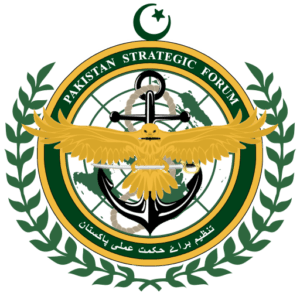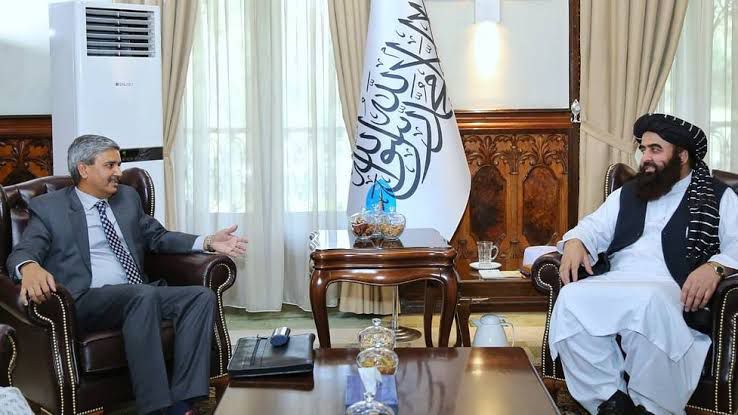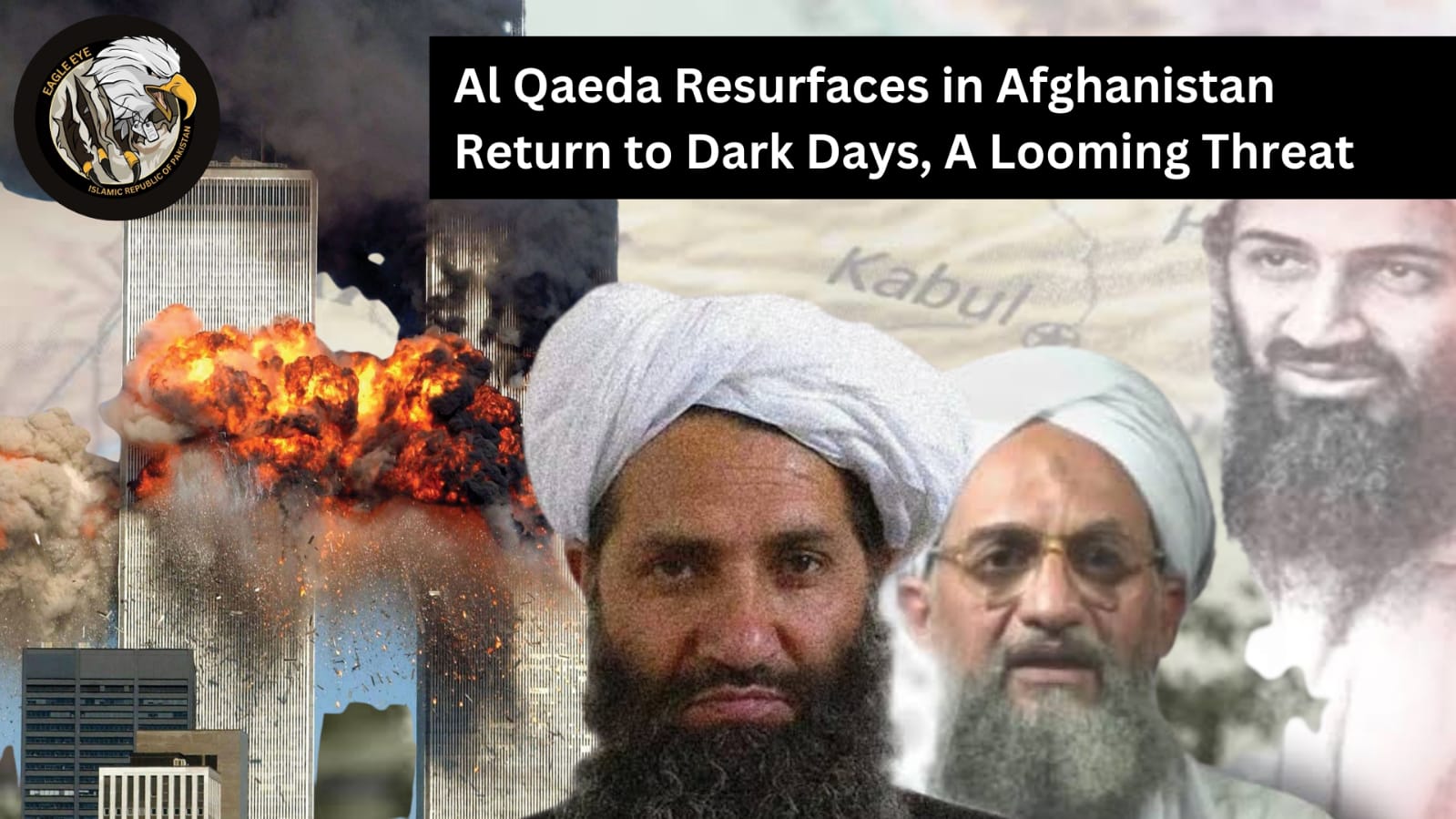Since taking power last summer, Afghanistan’s Taliban-led government has been isolated internationally; not a single country has yet recognized it. But in recent weeks, Taliban officials have made a series of increasingly public overtures to a once unlikely prospective partner: India. And the interest has been reciprocated, to some extent. At a regional security summit in Tajikistan in late May, Indian National Security Adviser Ajit Doval urged Afghanistan’s neighbors to provide counterterrorism aid to the war-torn country. On June 2, a delegation of senior Indian officials traveled to Kabul to meet with Taliban leaders. And on June 23, India reopened its diplomatic mission in Afghanistan.
In return for India’s tacit recognition, the Taliban are reportedly ready to act on intelligence against some of the major jihadi groups—including Lashkar-e-Taiba, Jaish-e-Mohammed, and al Qaeda in the Indian Subcontinent (AQIS)—that have traditionally found a haven in Afghanistan. The Taliban have long resisted pressure to act against foreign militants operating in Afghanistan. If their statements to the Indian government are accurate, it would mark a significant shift in the group’s approach to long-standing foreign militant allies. The Taliban’s nascent rapprochement with New Delhi is sharply at odds with the interests of the group’s longtime patron, Pakistan. Pakistan’s sponsorship of the Taliban over nearly three decades has been predicated on the belief that the Taliban could be counted on to limit Indian influence in Afghanistan. This portends a stunning shift in regional dynamics, as stronger ties with India could eventually allow Afghanistan’s Taliban-led government to distance itself from Pakistan.
India’s change of heart toward the Taliban comes as a surprise. When the Taliban first rose to power in 1996, India supported the anti-Taliban factions known as the Northern Alliance. After the U.S.-led invasion of Afghanistan in 2001, India was an unflinching supporter of the emerging Afghan republic that replaced the Taliban. During the two decades that followed, India consistently protested U.S. negotiations with the Taliban, fearing that any agreement would undermine the fledgling democratic order in Afghanistan and embolden Islamabad into increasing support for separatists in Indian-controlled Kashmir.
The Taliban’s willingness to engage with India also represents an about-face. For two decades, the Taliban bemoaned India’s support for the Afghan republic and targeted—both directly and through its allies—Indian personnel and interests in Afghanistan. The most infamous example is the 2008 bombing of the Indian embassy in Kabul, which was carried out by the Taliban’s Haqqani network and assessed by the U.S. government to have been supported by Pakistan. This history makes it all the more striking that the Taliban’s recent outreach to India reportedly involves robust discussions about counterterrorism. All the groups that the Indians want the Taliban to act against are longtime Taliban allies, even if their aims and the Taliban’s relationships with them vary. The Taliban’s alliances with Lashkar-e-Taiba and Jaish-e-Mohammed are in some respects an extension of the Taliban’s relationship with the Pakistani security establishment, having been backed by Pakistan against India since the 1990s. Both groups supported the Taliban’s insurgency but prioritized their agendas against India, particularly Kashmir. AQIS, on the other hand, has targeted both India and Pakistan. It has had a close relationship with the Taliban since its inception, assisting the Taliban’s general insurgency and their campaign against Islamic State Khorasan.
But the Indian government is signaling that the Taliban government is prepared to put some distance between itself and its militant allies, at least when it comes to India. For example, in an interview with an Indian news channel, Taliban Defense Minister Mullah Yaqoob promised that the Taliban would not allow India to be attacked from Afghan territory and expressed interest in sending Taliban cadres to India for military training. The Taliban’s newfound willingness to look beyond bad blood is likely a function of the group’s international isolation. Afghanistan’s Taliban government has yet to be formally recognized by any other country, and its economic challenges and difficulties in obtaining humanitarian assistance are exacerbated by its pariah status. It also has growing tensions with Pakistan over the Durand Line and the Taliban’s support for the anti-Pakistan Tehrik-e-Taliban Pakistan (TTP). The Taliban are signaling their independence from Pakistan for compelling domestic political reasons, given how unpopular Pakistan is in Afghanistan. Indian policymakers may have concluded that, despite their past assessments, there is enough distance between Pakistan and the Taliban to forge a working relationship. Islamabad’s growing anxiety over the Taliban’s continued commitment to protecting the TTP may have helped to reassure them. India may also be calculating that the Taliban can shield India from an increase in violence in Kashmir from Lashkar-e-Taiba and Jaish-e-Mohammed, in particular, as well as the threat from transnational jihadis, especially at a time when al Qaeda and Islamic State Khorasan have both stepped up their anti-India messaging.
A relationship with India has the potential to help ease the Taliban government’s diplomatic isolation and to open doors to much-needed economic assistance. For example, India may provide aid to earthquake victims, increase food aid, and revive the infrastructure projects that were underway under the former Afghan republic. Given its growing geopolitical heft, India may even lean on other countries such as Russia, Iran, and the United States to work with the Taliban. The Taliban probably also hope to dissuade India from supporting meaningful armed resistance, especially because India is one of the few external actors positioned to energize political opposition in Afghanistan.
But a détente with India carries risks for the Taliban, too. First and foremost, Taliban outreach to India is likely to antagonize Pakistan. A pragmatic Pakistani response might see a Taliban-India thaw as ultimately benefitting Pakistan’s interest in legitimizing the Taliban regime. However, Pakistan has traditionally seen Indian engagement in Afghanistan as zero-sum: any gains for India must necessarily be losses for Pakistan. And Islamabad may believe that New Delhi is trying to shield the Taliban from Pakistani pressure, particularly regarding the Taliban’s support for the TTP—a group that Pakistan has long insisted, with little credible evidence, is backed by India. The Pakistani security establishment may also see a genuine Taliban crackdown against Lashkar-e-Taiba and Jaish-e-Mohammed as an act against Pakistan and as damaging Pakistan’s plausible deniability for those groups’ actions. For its part, India may be calculating that Pakistan is under pressure due to economic problems and international isolation and is unlikely to counter the India-Taliban thaw.
In addition, the Taliban face reputational costs from associating with India’s ruling party, the Hindu nationalist Bharatiya Janata Party, which has a long track record of trafficking in anti-Muslim rhetoric. A stronger relationship with India could also elicit an adverse reaction from Taliban hard-liners and other jihadis, which could put a strain on the Taliban’s cohesion. For India, the key question is how much stock to place in the Taliban’s counterterrorism assurances. As in its previous negotiations with Washington, the group has likely tried to reassure New Delhi that Afghan territory will not be used in attacks against India. Yet such assurances will likely come with enough caveats to effectively allow the Taliban’s militant allies—particularly AQIS—to operate from Afghanistan in ways that give the Taliban some deniability. And in the past, even when faced with enormous pressure, the Taliban have consistently demonstrated that they are unlikely to turn on their foreign militant allies.
Even if their intentions could be trusted, the Taliban’s capacity to effectively rein in foreign militant groups remains in doubt. The Taliban’s ongoing crackdown against Islamic State Khorasan, which has failed to net any major figures, suggests that they may still struggle to conduct targeted operations. AQIS, in particular, has forged strong relationships with some members of the Taliban, having worked with them in operations against the U.S. military, the former Afghan government, and Islamic State Khorasan. These past ties raise questions about the Taliban’s ability to protect India’s presence in Afghanistan, which will be a top target for multiple terrorist groups.
India’s engagement comes as the international community needs new sources of leverage against the Taliban for a range of priorities—and if the Taliban are relatively responsive to India, that is good news. In addition, if India could really broker a counterterrorism pact with the Taliban against the Taliban’s allies, it would be a significant positive step that could provide a channel for the United States to exert pressure on the Taliban against groups of concern to Washington. But India’s reentry into Kabul also exposes it to massive new security risks, both in terms of direct attacks on its interests in Afghanistan and in the potential of complicating deep Indian-Pakistani security competition in Afghanistan. The United States should coordinate with India to maximize the counterterrorism benefits of India’s engagement while managing the risks of regional tensions—which could detract from the pressing Indo-Pacific security agenda.
#WhiskeyPapa
#TeamPakistanStrategicForum






